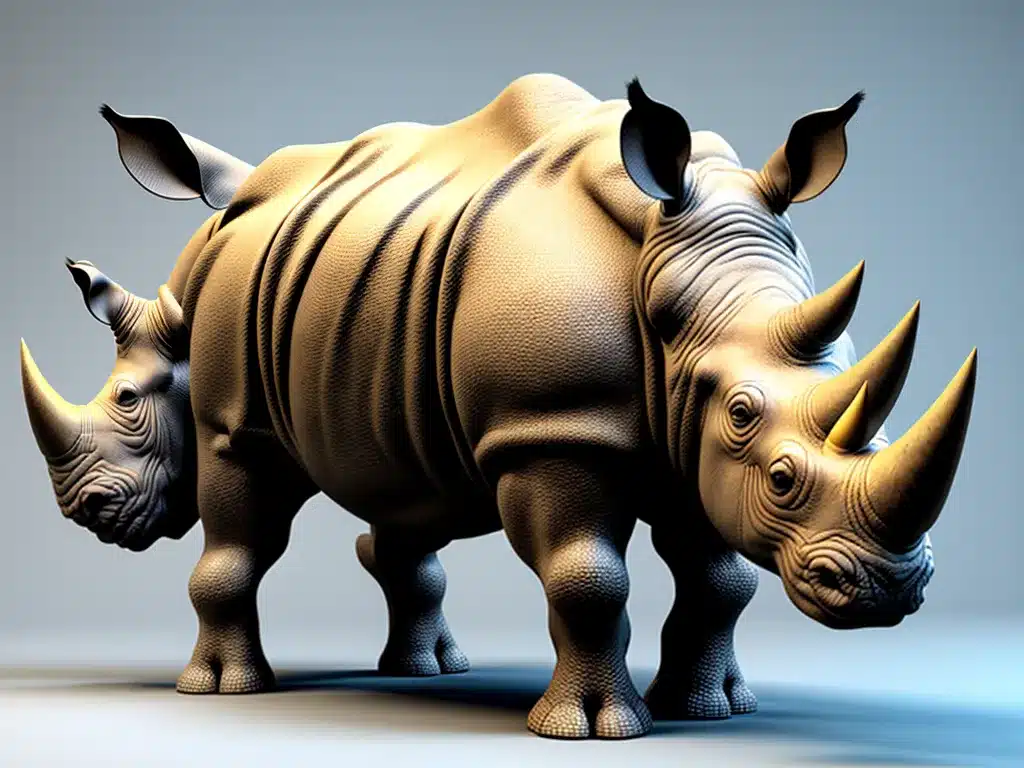Introduction
Rhino 8 from McNeel is the latest version of the popular NURBS 3D modeling software. As a long-time Rhino user, I was eager to get my hands on the new release and see what improvements were made. In this in-depth review, I’ll cover the key new features, interface changes, performance updates, and other enhancements in Rhino 8 that 3D modelers should know about. Whether you’re new to Rhino or deciding if upgrading from a previous version is worthwhile, this review has all the details you need to evaluate if Rhino 8 is right for your 3D modeling needs.
Major Improvements in Rhino 8
New Mesh Modeling Tools
One of the biggest additions in Rhino 8 is the suite of new mesh modeling tools. In previous versions, Rhino’s mesh support was limited, making it difficult to work with polygon meshes. But Rhino 8 aims to change that with powerful new tools like QuadRemesher, MeshDevil, MeshPipeline, and more.
As a 3D modeler, these tools allow me to cleanly convert NURBS surfaces to high-quality meshes for 3D printing or real-time applications. The quad remesher in particular gives incredible quad-dominated meshes that easily unwrap and deform. Rhino 8 brings its mesh abilities up to par with other 3D apps.
Performance and Stability Upgrades
Behind the scenes, McNeel has worked to optimize Rhino 8 for speed and stability. On my Windows 10 workstation with an Nvidia RTX 3090, Rhino 8 feels significantly faster than version 7. Redraws are quicker and manipulating dense meshes and NURBS models feels very fluid.
Rhino 8 also seems rock solid so far in my testing. The graphics driver crashes and other instability I occasionally experienced in v7 are gone. McNeel took a focus on stability and performance with this release, and it shows. As a daily Rhino user, I really appreciate the improvements.
New SubD Modeling Tools
Rhino 8 introduces a range of new SubD modeling tools for more flexible freeform modeling. The main additions are new inflation, twist, shear, and bend deformers. These let me intuitively sculpt and deform SubD models in ways that were difficult before.
There is also a new SubD projection tool for cleanly projecting curves, point clouds, and other geometry onto SubD surfaces. I’m already finding these new SubD tools to be a big workflow improvement. They fill in some gaps compared to other SubD modelers.
UI Enhancements
Dark Mode
A system-wide dark mode is now available in Rhino 8. As someone who spends many hours a day modeling in Rhino, I find the darker interfaces much easier on my eyes. Rhino’s dark mode gives the interface a clean, modern look while reducing eyestrain.
Toggling between light and dark modes is easy. I can darken just Rhino, or have it automatically follow the system theme. This is a great quality of life change for the Rhino viewports.
Customizable Toolbars
The toolbars and menus are now customizable in Rhino 8. By right-clicking on any toolbar, I can easily add, remove, and rearrange tools however I like. This allows me to customize Rhino’s interface to match my exact workflow. If I use certain commands frequently, I can now promote them to the main toolbars for quick access.
Combined with interface themes, this improved customizability makes Rhino 8 feel much more personalized to my specific modeling needs.
Reworked Panels
Some key information panels like the Layers, Materials, and Objects panels have been overhauled in Rhino 8. They now use a single-column vertical layout with icons that I find clean and easy to parse. Rhino’s UI generally feels less cluttered and more modern while preserving functionality.
New Rendering Features
Real-Time Rendering
Rhino 8 includes a new real-time rendering engine based on Nvidia’s MDL technology. This allows me to quickly preview materials, lighting, and effects right in the Rhino viewport. The new real-time renderer is fast and makes simple scene setup much more interactive.
For quick design iteration, the real-time rendering is a great addition. Of course, Rhino’s existing ray tracing and GPU renderers like V-Ray and Redshift remain available for higher quality final renders. But the real-time engine fills an important gap in Rhino’s visualization pipeline.
Enhanced Sky Light
Modeling and rendering realistic outdoor lighting has gotten better in Rhino 8. The new Sun and Sky enhancements allow for extremely accurate sun positions and HDRI sky lighting. This takes a lot of guesswork out of modeling outdoor objects realistically.
The Sun object has been expanded with location and date/time presets. And the Sky Light has vastly improved HDRI resolution and atmospheric ground illumination. Setting up a natural-looking outdoor render is now much easier in Rhino.
Is Rhino 8 Worth Upgrading?
For current Rhino users, Rhino 8 is definitely worth upgrading in my opinion. The interface improvements, stability enhancements, and major additions like the mesh modeling tools make this more than just a minor point release. McNeel focused on robustness and workflow with Rhino 8 and it shows.
For those new to Rhino, version 8 is the most approachable yet. The interface updates make Rhino feel modern and nimble. And the expanded modeling capabilities like the meshing and SubD tools make Rhino 8 flexible for both hard surface and organic work.
So in summary, I’m very pleased with Rhino 8 so far. For 3D modelers, it delivers excellent refinements across the board. The stability and speed boosts are welcome, and major additions like the new meshing tools fill crucial gaps. While some may wait for more established 8.x incremental updates, I think early adopters will be happy with Rhino 8 today. It’s a strong new release that makes an already great 3D app even better.













